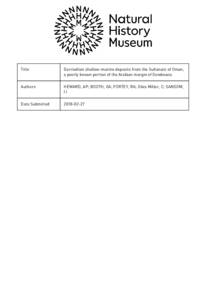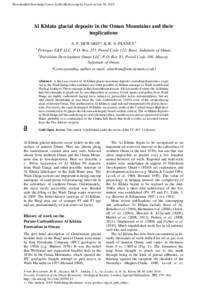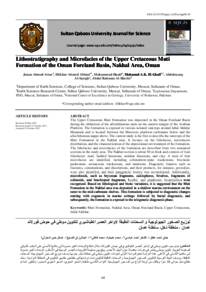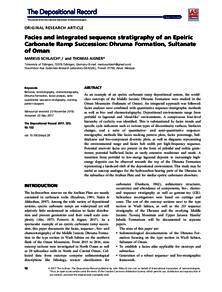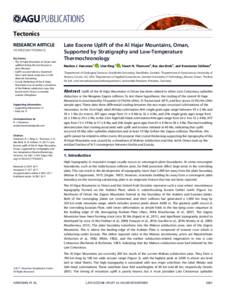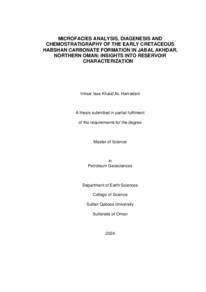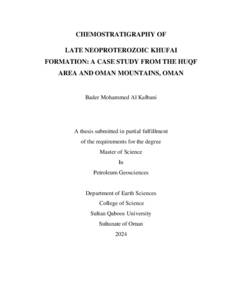Document
Darriwilian shallow-marine deposits from the Sultanate of Oman, a poorly known portion of the Arabian margin of Gondwana.
Identifier
DOI: 10.1017/S0016756816000819
Source
Geological Magazine. v. 155, 1, p. 59-84
Contributors
Country
United Kingdom.
Publisher
Cambridge University Press.
Gregorian
2018-01-01
Language
English
English abstract
The Amdeh Formation is a 3.4 km stack of sparsely fossiliferous quartzites and shales which crops out in the Al Hajar mountains near Muscat. Here we describe the uppermost member (Am5) that can be dated biostratigraphically as Darriwilian and which is the outcrop equivalent, and probably the seaward continuation, of the Saih Nihayda Formation in the Ghaba Salt Basin of northern Oman. The outcrops at Wadi Daiqa and Hayl al Quwasim consist of 690 m of quartzitic sandstones, shales and bivalve-rich shell beds. Trace fossils referable to the Cruziana and Skolithos ichnofacies abound. The member comprises storm-dominated shelf, shoreface and delta deposits. A number of new discoveries have been made in the outcrops: fragments of the arandaspid fish Sacabambaspis, ossicles and moulds of the early disparid crinoid Iocrinus, two new genera of conodont, an occurrence of the rare trinucleid trilobite Yinpanolithus, and palynological and sedimentological evidence of more continuous Floian-Darriwilian deposition than is usual in the region. Sea levels during Middle Ordovician time are estimated to have been 50-200 m above present levels and a wide, low-gradient shelf covered much of Arabia. Similar trace fossils and storm-dominated, micro-tidal, sedimentary rocks occur throughout the region. Small changes of sea level, possibly caused by the growth and melting of polar ice sheets, could lead to substantial seaward or landward shifts of facies belts. The Am5 deposits are thick compared to most equivalents in Arabia implying active subsidence and a ready supply of sediment.
ISSN
0016-7568
Category
Journal articles

